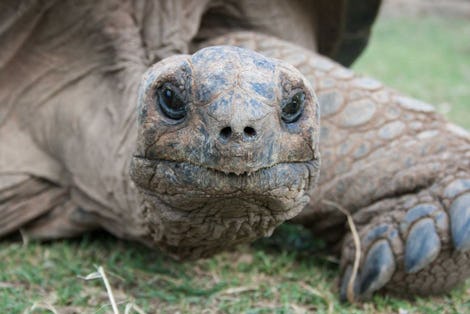The passing of Lonesome George, the last known member of the Chelonoidis abingdonii species of giant tortoise, in 2012 was met with great sadness in the conservation community. Now George’s DNA is yielding extraordinary insights into both tortoise conservation and human ageing.
Lonesome George, believed to be about 100 years old at his time of death, was found in 1972 and swiftly became an icon of Ecuador’s Galapagos Islands. The species of giant tortoise to which George was a member were among the animals that helped Charles Darwin formulate his theory of evolution while conducting research in the Galapagos.
In a collaborative project involving Yale University, University of Oviedo, Galapagos National Park Service, Flinders University and nine other institutions, scientists have mapped George’s genetic sequence and compared it to other animals, including humans.

Several results were of particular interest to researchers especially variants in the tortoise genome that could affect ageing and preconditions for cancer. Giant tortoises, like some other reptiles, have very low rates of cancer and it’s believed further analysis of their genetic sequence could offer insight into how to prevent the disease in humans.
But it’s not all about human health. With six species of giant tortoise listed as critically endangered, three as endangered, three as vulnerable and at least one as extinct, it is hoped the knowledge gained about the species’ characteristics from studying George could help conservationists rebuild populations where it remains possible.
Positive Action
- Marine plastic pollution is a huge issue for many marine and coastal mammals such as turtles, tortoises, dolphins and whales. Avoid single-use plastics where possible and find out how to recycle the unavoidable stuff at RecyclingNearYou.
- If you feel strongly about biodiversity conservation and preserving wilderness areas, find a group in your area to support or get involved with. Many conservation groups are constantly seeking volunteers to help them maintain their important programs.
Subscribe to Positive Environment News
Positive Environment News has been compiled using publicly available information. Planet Ark does not take responsibility for the accuracy of the original information and encourages readers to check the references before using this information for their own purposes.